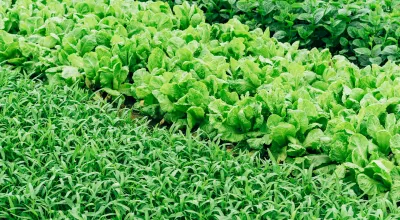
Marketing Tips To Help You Grow Your Business
Raising high-quality agricultural products can be extremely satisfying, but that’s only part of the equation for successful farmers. To generate sales and revenue, producers also must become marketers. While this may be unfamiliar territory for some beginning farmers, it’s easy to learn and apply the basics.
“Marketing can be as simple as a Facebook post about what vegetables are available that day at the farmstand or a photo or video of an animal being born on the farm,” says Andrew Stutzman, Ag Lending Manager with Horizon Farm Credit. “With a little research and planning, any farmer can develop and execute a basic marketing plan.”
What are you marketing?
What you’re producing should determine how – and if you even need to – advertise. For example, if you’re raising a commodity product and your main consumer is the local elevator or integrator, marketing may not be that critical. But if you’re growing a niche product, marketing becomes far more important.
When defining and describing what you’re selling, it’s smart to consider:
Your products
Your marketing efforts should help you build demand and distinguish your products from those of your competitors’. The most important thing to do is to let your customers know what’s unique about your products. Are they an unusual variety, or organic or heirloom? Many consumers are drawn to certain qualities, such as locally grown, sustainably raised or artisanal.
The customer experience
If you’re selling in-person, you’re offering friendly, informed service and convenient hours. But if you’re selling to wholesalers, you’re offering flexibility and reliability in delivering your product.
Yourself and your operation
If you’re a new operator, you’ll need to do more marketing to let people know about you. Your story – history, farming practices, community involvement and social responsibility efforts – can be incorporated into your marketing messages so your customers feel good about supporting you.
Who’s buying?
Identifying your target market is another important consideration. You’ll need to determine who will respond to what you’re selling and then learn as much as you can about those people. Where do they live and work? What are their interests? And what are their distinguishing demographics, such as average age and income? You’ll soon realize that you have several target groups to which you should market. One group enjoys visiting the farmers market, while another drives by your roadside stand. Or suburbanites and college students. Or direct consumers and wholesalers. You’ll want to craft marketing messages for each of these target groups.
What’s the state of the market?
Understanding the current supply and demand for your products can help you determine how much money and effort to invest into marketing. If there’s high demand and low supply, simply letting customers know you have what they’re looking for may be sufficient. If there’s an abundant supply or low demand, you’ll need to put more effort into your marketing. Keep in mind that the laws of supply and demand change; it’s a lot easier to sell ice cream during the summer months than in the winter!
The competitive landscape also impacts your marketing efforts and messages. You may be competing against other local producers, but you could also be competing with wholesalers, grocery stores, a community-supported agricultural group or even web-based companies. The way you market and your marketing messages will likely be influenced by your competition.
What are the best marketing tactics?
Your target market and your product together will determine the right marketing tactics to use. For example, if you have a farm stand and drive-by traffic is your target market, you’ll want great signage. Other great channels include:
- Social media
- Websites
- Signage
- Flyers
- Paid advertising (radio, billboards, television)
Getting started
Developing a basic marketing plan is actually very simple. Here are some steps to get you moving in the right direction:
- Consider how best to reach your target market to determine your tactics.
- Write messages that differentiate your products and encourage customers to buy from you.
- Plan when you’ll deliver your messages, keeping in mind that regular communication, especially on social media, is essential to building your brand.
- Execute your plan.
- Track your results so you can fine-tune your marketing efforts moving forward.
If you’d like to see an outline for an ag marketing plan, the University of Maryland Extension has a good one to follow.
How much does marketing generally cost?
The great news is that it doesn’t have to cost much. Social media is free, and websites can be inexpensive to create. Or you might consider building your own site using templates offered by web hosting services and software firms. Costs rise with paid advertising like radio, of course, so you should carefully consider their expected return on investment before making a paid advertising outlay.
Source:
Andrew Stutzman, Ag Lending Manager, Horizon Farm Credit

























